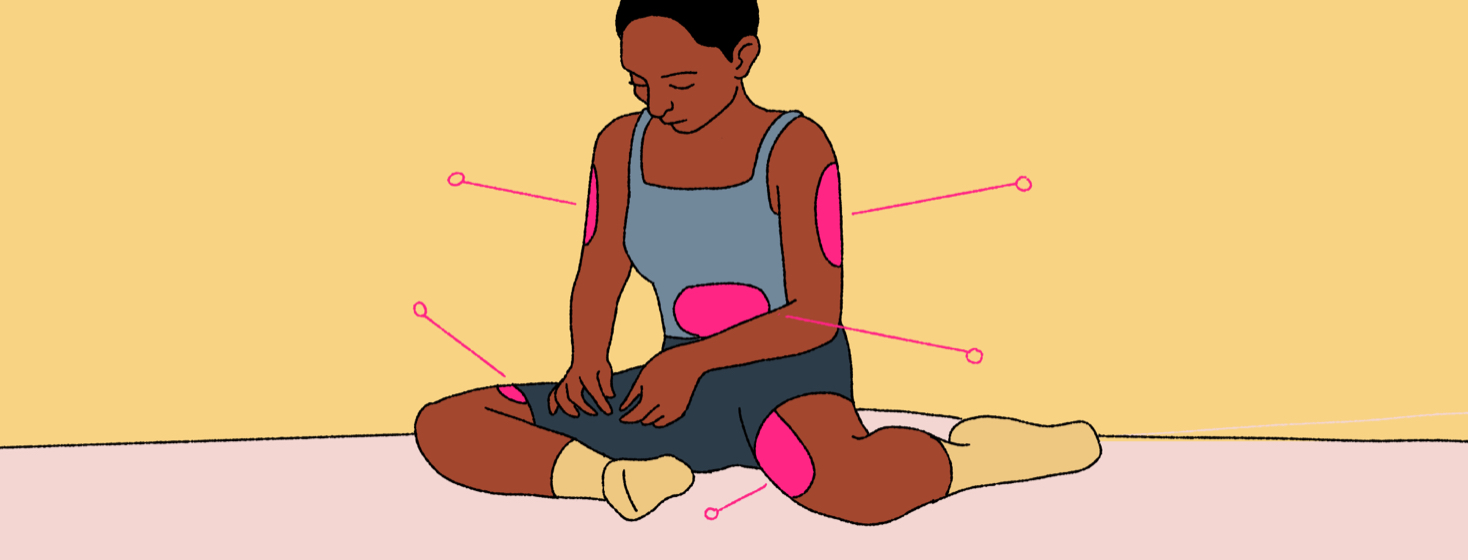Rotating Injectable Medications
Over the last few years, I have been prescribed some different injectable medicines. I have never been afraid of needles, they just do not really bother me, so giving myself shots is not a big deal. But the issue I am having is that I am running out of sites to rotate my different shots.
A few too many injectable medicines: For asthma and other conditions
Most of the injections I give myself are called subcutaneous injections. Sub-Q injections use short needles that deposit the medication into the fatty tissue in the body, where it is then absorbed. There are specific areas that are recommended for doing subcutaneous injections— the back of the upper arms, the fatty portion of your stomach, the sides of your abdomen (your love handles), and the inner or outer thighs.
Each medicine comes with different instructions, this is just what I have been told about my injections. (Be sure to check with your doctor or nurse regarding locations for sub-q injections. This is not medical advice.)
My injectable medication for asthma
I take a biologic medicine for my asthma called Dupixent. It has done wonders for my asthma and helps me keep my symptoms under control. I have been on it for almost three years now and am so thankful to have access to it. I do my Dupixent shots every other week.
I have pretty severe asthma and have been on steroids for long periods of time over the years. This prolonged steroid use has affected my body's ability to regulate my sugar levels.
Monitoring and managing my blood sugar levels
My blood sugar can drop unexpectedly, even when I am on steroids, so I have to be careful to monitor my blood sugar all the time. I use something called a continuous glucose monitor to keep track of my sugar level. The glucose monitor uses a filament placed just under the skin to monitor the blood glucose level of interstitial fluid. One more thing that is "injected."
Each sensor lasts 10 days before a new one needs to be applied. It is recommended that the sensor be moved every 10 days so the skin can breathe and heal.
Along with my sugar issues, I also use an injectable medication to help regulate my blood sugar levels. This medicine is injected once a week. Unfortunately, there is a shortage of this medicine right now and the higher doses are not available. As a result, I have to give myself two smaller doses to make the strength that I need. Therefore, it ends up being two injections every week.
Migraine medication
In addition, I take another injectable medicine for my migraines. Thankfully, I only have to take that one once a month.
Lucky me, I just started a new medication that is infused under the skin every week. It is quite a large volume of liquid that must be given subcutaneously. Instead of putting all of it into one site, the medicine is divided up into three locations so it can be better absorbed.
So what’s this got to do with anything?
I’m so glad you asked!
Injections sites need to be rotated.
I don’t want to put an injection in the same spot as I did the last one. If an injection is given in the same spot repeatedly, the tissue can start to break down and cause more issues. To that end, I’ve had to come up with a system to keep track of all my injections.
The first step is keeping a schedule of when each medicine is given. All of my medicines are taken on a 28-day schedule, so it is fairly easy to divide them out. The only thing that does not fit this schedule is my blood sugar sensor, but it’s easy enough just to insert a new sensor every 10 days. It is important to mention my blood glucose monitor though because it affects the rotation of my injectable meds.
There are pros and cons to injecting different meds in different places. The larger the volume of the injected medication, the more likely it is to hurt. So I would rather put a smaller amount of medicine in places that have more tension on them, and larger amounts into places that have a bit more wiggle room.
Location, and tracking
Each injection has its own place. I will spare you the details, but along with my shot rotation, each injection is assigned one or two places that can be rotated. For instance, I always put my BG shot into my outer thighs. The dupixnet is alternated between my "love handles." The H Infusion goes into my abdomen. Etcetera.
Having each injection assigned to a specific location helps me keep track of where I am putting the medicine and helps me keep a rotation, instead of using the same spot over and over again. This system works really well for me and makes knowing where each shot goes really easy.
Do you use any injectable medications for your asthma?
How do you keep track of where they go? Let us know in the comments!

Join the conversation